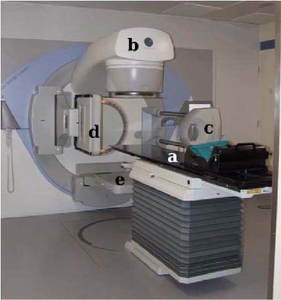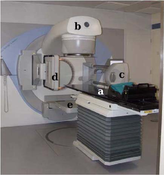Information
- Publication Type: Master Thesis
- Workgroup(s)/Project(s):
- Date: January 2010
- Diploma Examination: 22. January 2010
- First Supervisor:
- Eduard Gröller
- Wolfgang Birkfellner
- Stefan Bruckner
- Eduard Gröller
Abstract
This thesis presents a comparison of high-speed rendering algorithms for the application in 2D/3D-image registration in radiation oncology. Image guided radiation therapy (IGRT) is a technique for improving the treatment of cancer with ionizing radiation by adapting the treatment plan to the current situation using 2D/3D-image registration. To accelerate this procedure, also rendering of Digitally Rendered Radiographs (DRR), as a part of it, has to be performed faster. In the context of this thesis, a GPU based wobbled splat rendering algorithm based on the work of Spoerk et al. (2007) is further improved and compared to a newly developed GPU based ray casting implementation. For comparison, rendering quality and performance as well as the influence on the quality and performance of the overall registration process are measured and analyzed in detail. These results show that both methods are competitive although ray casting has in its current implementation several advantages over wobbled splat rendering.Additional Files and Images
Weblinks
No further information available.BibTeX
@mastersthesis{spoerk-2010-hpgpu,
title = "High-performance GPU based Rendering for Real-Time, rigid
2D/3D-Image Registration in Radiation Oncology",
author = "Jakob Sp\"{o}rk",
year = "2010",
abstract = "This thesis presents a comparison of high-speed rendering
algorithms for the application in 2D/3D-image registration
in radiation oncology. Image guided radiation therapy (IGRT)
is a technique for improving the treatment of cancer with
ionizing radiation by adapting the treatment plan to the
current situation using 2D/3D-image registration. To
accelerate this procedure, also rendering of Digitally
Rendered Radiographs (DRR), as a part of it, has to be
performed faster. In the context of this thesis, a GPU based
wobbled splat rendering algorithm based on the work of
Spoerk et al. (2007) is further improved and compared to a
newly developed GPU based ray casting implementation. For
comparison, rendering quality and performance as well as the
influence on the quality and performance of the overall
registration process are measured and analyzed in detail.
These results show that both methods are competitive
although ray casting has in its current implementation
several advantages over wobbled splat rendering.",
month = jan,
address = "Favoritenstrasse 9-11/E193-02, A-1040 Vienna, Austria",
school = "Institute of Computer Graphics and Algorithms, Vienna
University of Technology ",
URL = "https://www.cg.tuwien.ac.at/research/publications/2010/spoerk-2010-hpgpu/",
}

 image
image paper
paper

